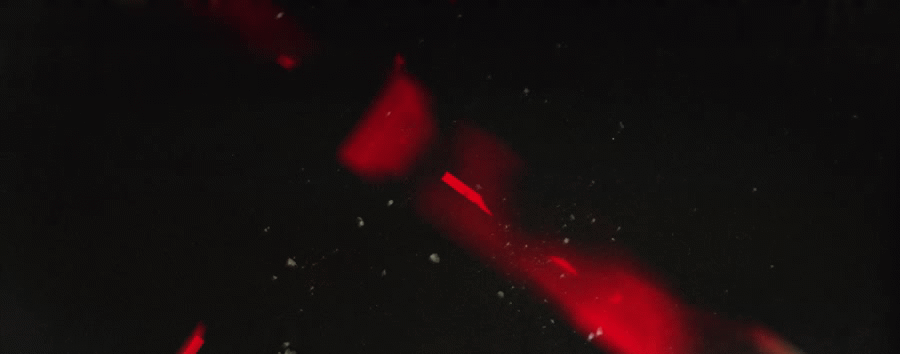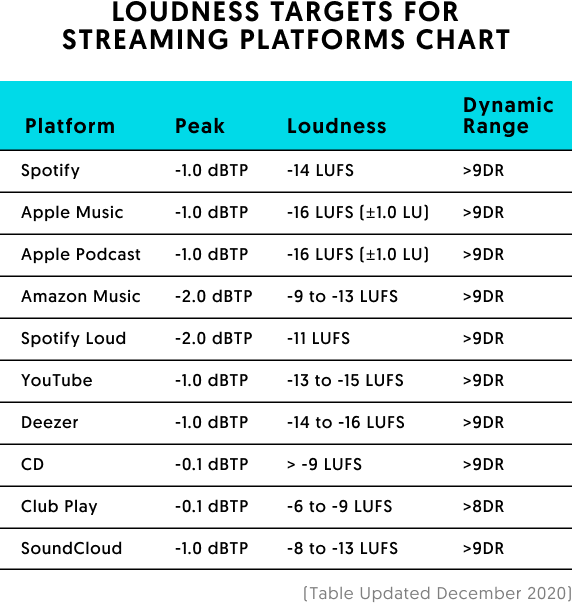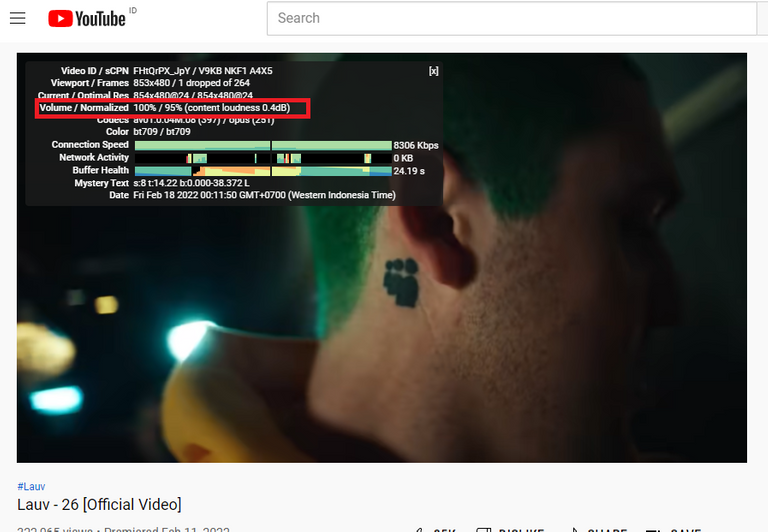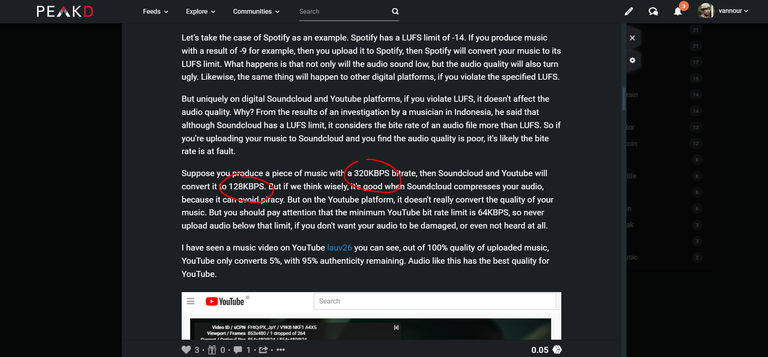Some of you have done great musical arrangements, mixing accurately, and mastering perfectly. However, when you upload to streaming media, such as YouTube, you see the results are changing for the worse.
Why did it happen?
In mathematics, RMS stands for Root Mean Square which is defined as the square root of the mean square (the arithmetic mean of the square of a set of numbers), that is, in mathematics.
But this time I'm not going to talk about math that has a lot of formulas, I'm going to talk about what RMS, TRUE PEAK, and LUFS are in music.
RMS, in the field of music or sound, is the maximum unit of audio that can be received by a device that can produce sound. For example, speakers, headphones, headsets, etc., have a maximum audio loudness limit, and if you exceed this limit, it will most likely damage the device or the audio.
The True Peak is the maximum level a signal reaches—the "loudest" point in your audio signal. True Peak is having an accurate level of Peak which both mean the maximum level reached by the loudest signal.
While LUFS is almost the same as RMS, the difference is that LUFS is the maximum unit of audio that a digital platform can accept. For example, Youtube, Spotify, Apple Music, Amazon Music, Apple Podcasts, Deezer, CD, Club, Soundclouds, and others. all of these digital platforms have different LUFS.
By now you have understood what RMS, TRUE PEAK, and LUFS are.
So what does this have to do with the question above?
Before that, please see the image below.
Let's take the case of Spotify as an example. Spotify has a LUFS limit of -14. If you produce music with a result of -9 for example, then you upload it to Spotify, then Spotify will convert your music to its LUFS limit. What happens is that not only will the audio sound low, but the audio quality will also turn ugly. Likewise, the same thing will happen to other digital platforms, if you violate the specified LUFS.
But uniquely on digital Soundcloud and Youtube platforms, if you violate LUFS, it doesn't affect the audio quality. Why? From the results of an investigation by a musician in Indonesia, he said that although Soundcloud has a LUFS limit, it considers the bite rate of an audio file more than LUFS. So if you're uploading your music to Soundcloud and you find the audio quality is poor, it's likely the bite rate is at fault.
Suppose you produce a piece of music with a 320KBPS bitrate, then Soundcloud and Youtube will convert it to 128KBPS. But if we think wisely, it's good when Soundcloud compresses your audio, because it can avoid piracy. But on the Youtube platform, it doesn't really convert the quality of your music. But you should pay attention that the minimum YouTube bit rate limit is 64KBPS, so never upload audio below that limit, if you don't want your audio to be damaged, or even not heard at all.
I have seen a music video on YouTube lauv26 you can see, out of 100% quality of uploaded music, YouTube only converts 5%, with 95% authenticity remaining. Audio like this has the best quality for YouTube.
So what is the best step you should take?
The answer is to master your music according to the LUFS defined by each platform. If you want to upload to eight digital platforms, that means you need to do eight different masterings.
Now let's try to see how technical mastering with predefined LUFS is. Here I use VST Izotope Ozone 9 for mastering music on the DAW, FL Studio 20. Besides Izotope Ozone 9, I also added wave candy and a Youlean loudness meter as measurements.
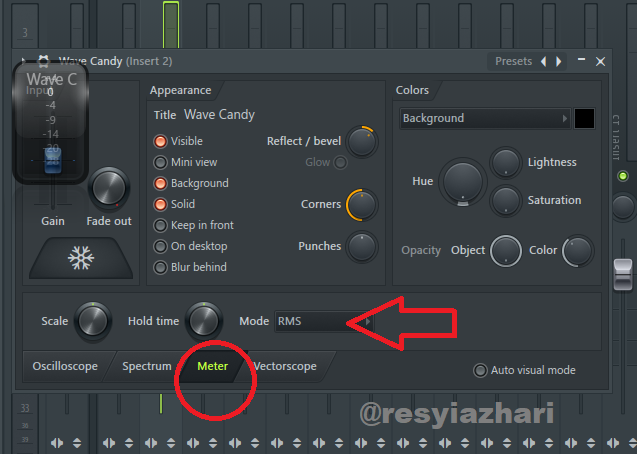
For the first step, I set True Peak at the -0.3 position. I chose the True Peak limit to be safe because almost all digital platforms have a True Peak limit of 0 (see the first image).
After I set True Peak, I run the music and see the RMS size through wave candy. I set the RMS at -6 by increasing or decreasing the threshold.
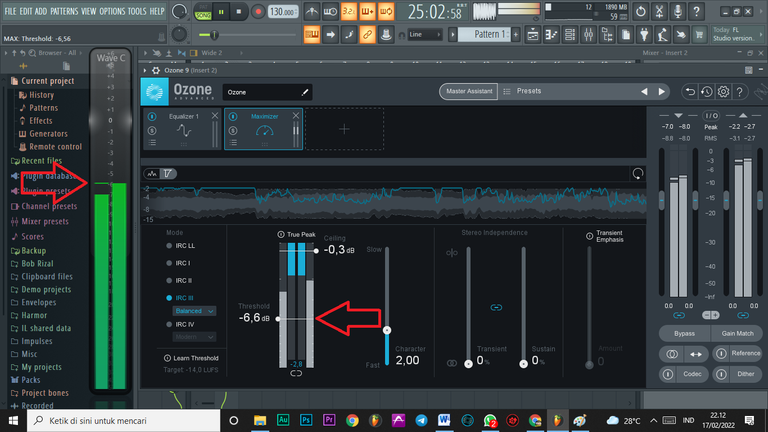
After the RMS is at a safe limit, I will set LUFS by paying attention to the size of the VST Youlean.
On Vst Youlean, there are several choices of digital platforms which are the goal of mastering. Here I will take the example of Spotify.

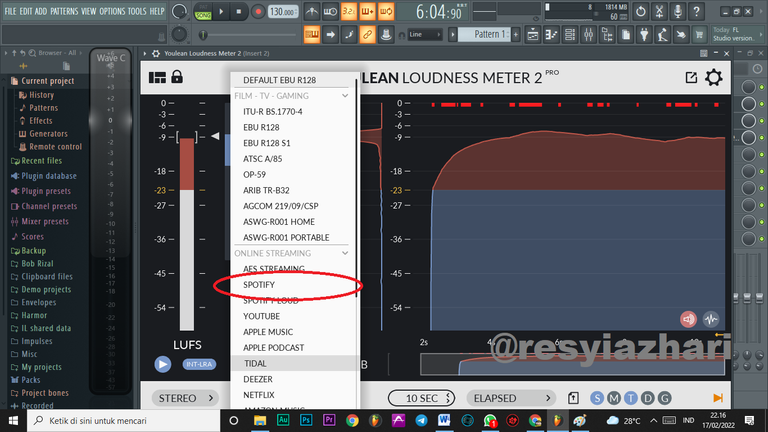
If you look back at the first table above, the LUFS for Spotify is -14.
The first time I played music, it turned out that my music was above the LUFS limit for Spotify. And if you look in the blue circle, there is also a red signal.
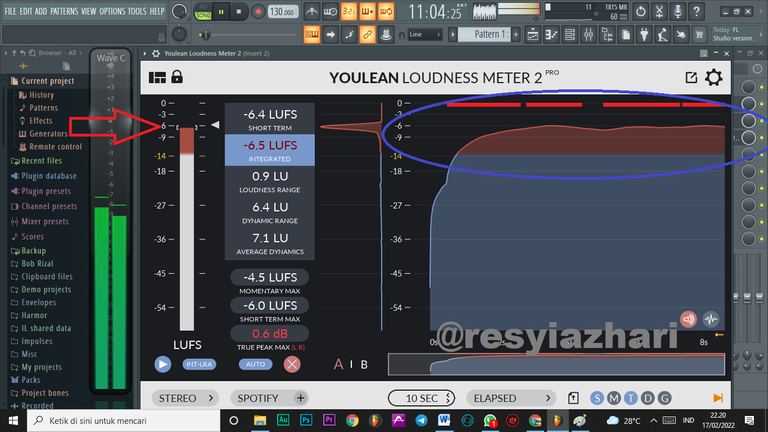
When that happens, then I have to set it at the threshold again so that the LUFS is at the limit I want, which is -14, and in the blue circle, you can also see that there is no red signal there.
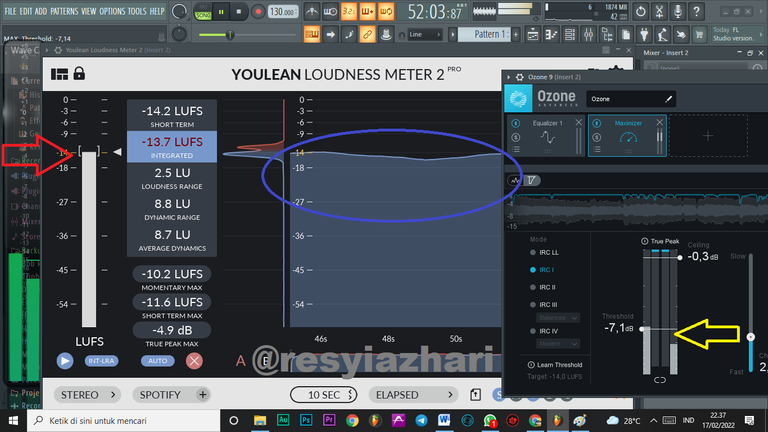
If that's all done, finally, please export your music in WAV format, and it's ready to be uploaded to Spotify.
Do the same for all other digital platforms.
Then if you ask me the question, "If you could only do one mastering, which standard would you choose?" From that question, I will choose the YouTube standard for two reasons: the first is that the YouTube standard is more flexible when it comes to other platforms, and the second is that currently, the platform that is most in demand by listeners is YouTube.
Note: I made this post not to prove that I am very expert, it's just that this is what knowledge I heard from my friends, who I consider my teacher.


FOLLOW ME ON
DISCORD FACEBOOK INSTAGRAM TELEGRAM TWITTER
